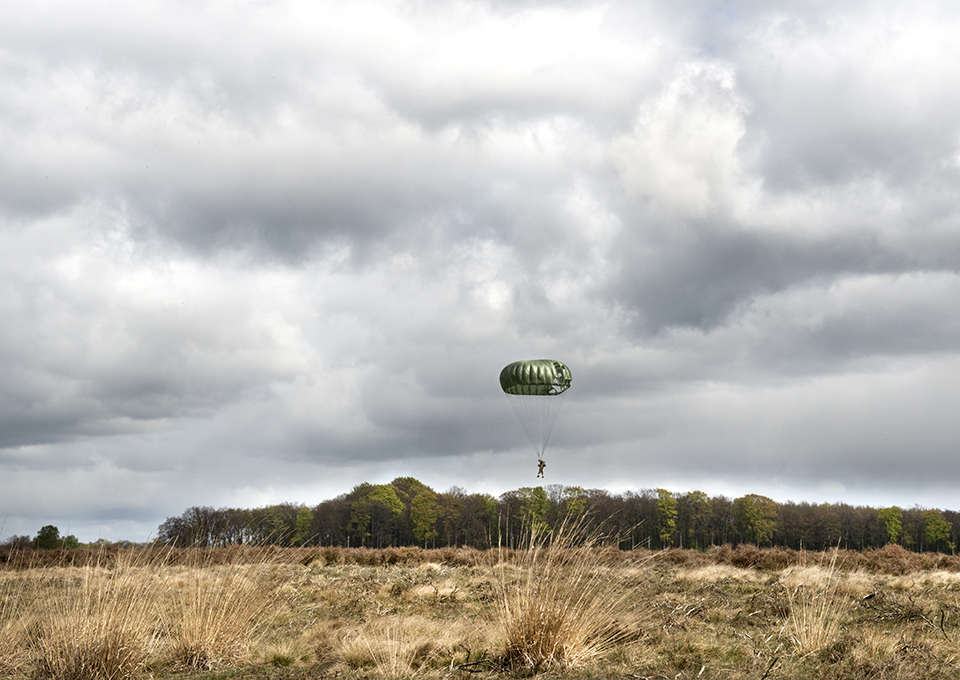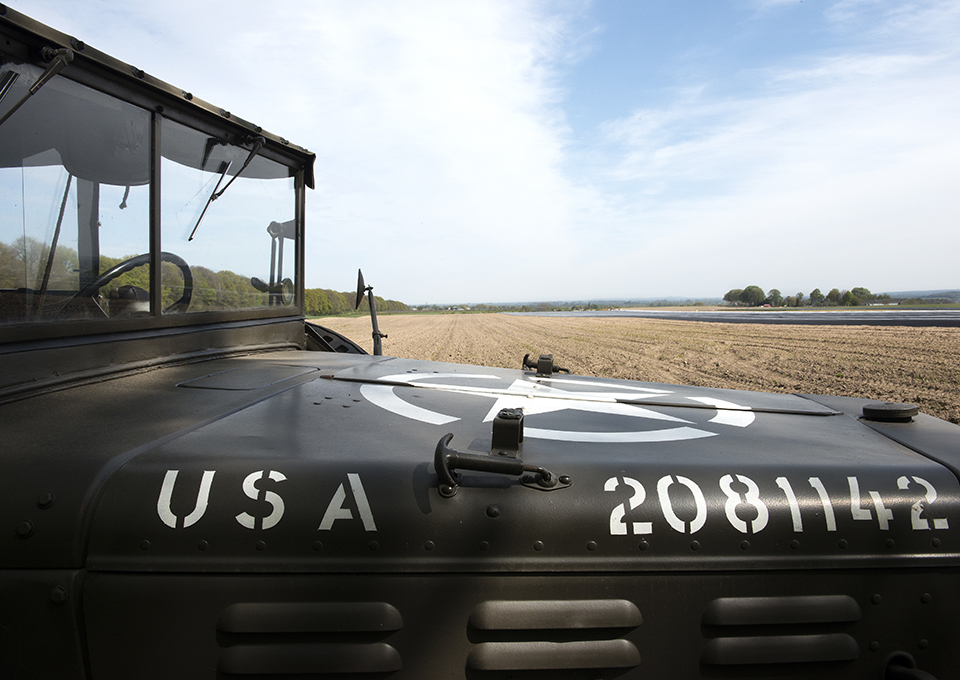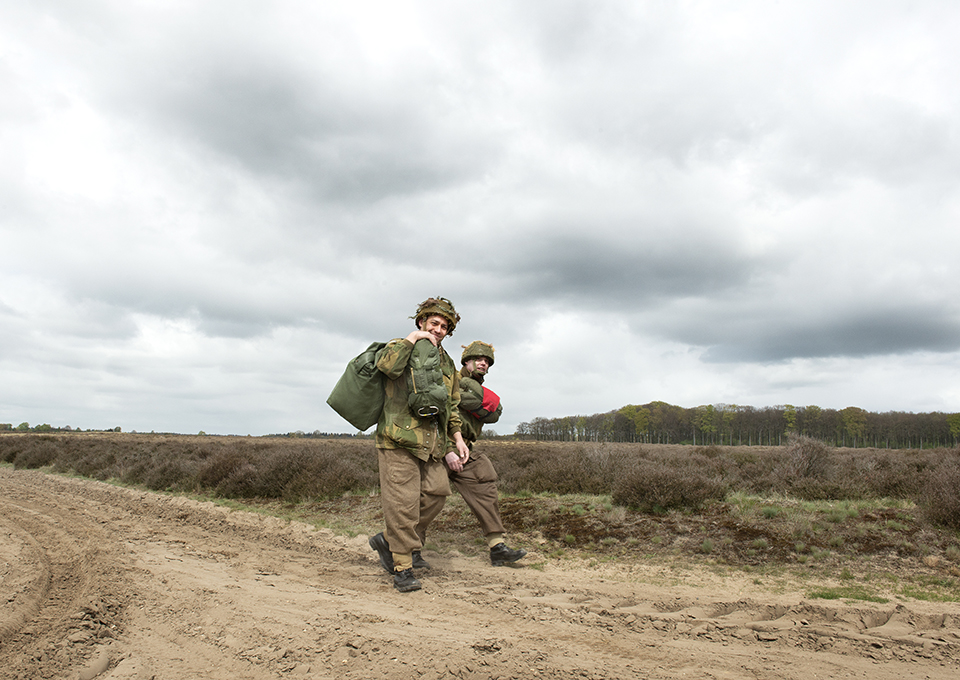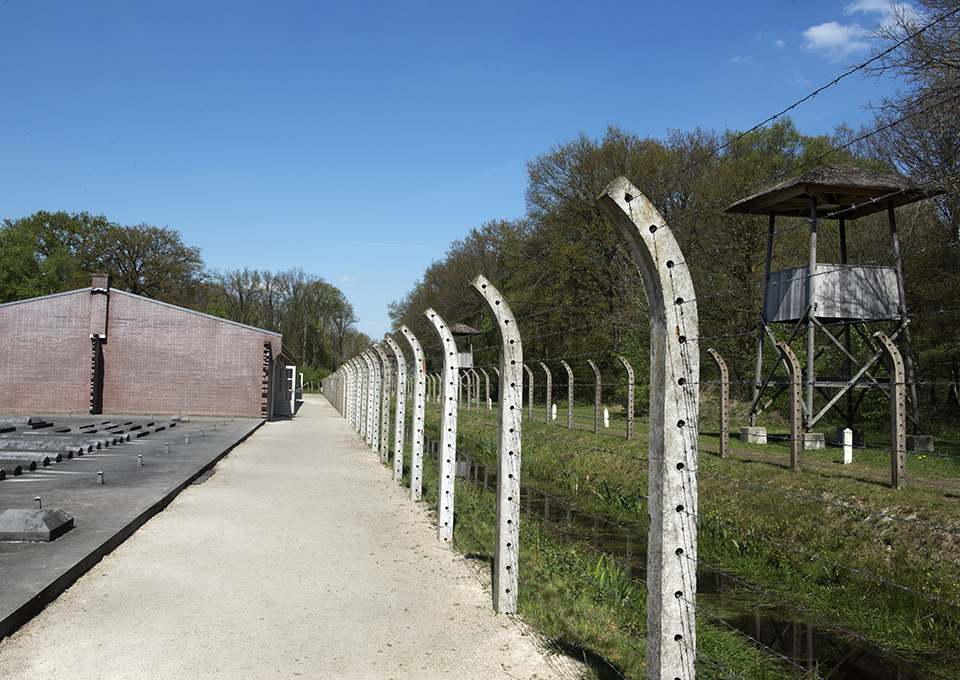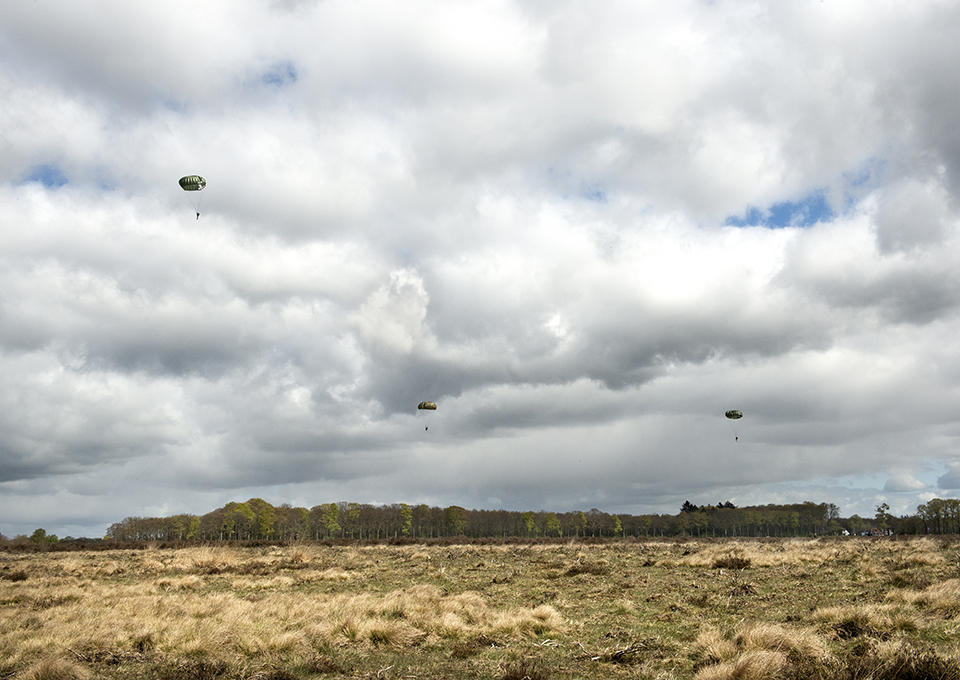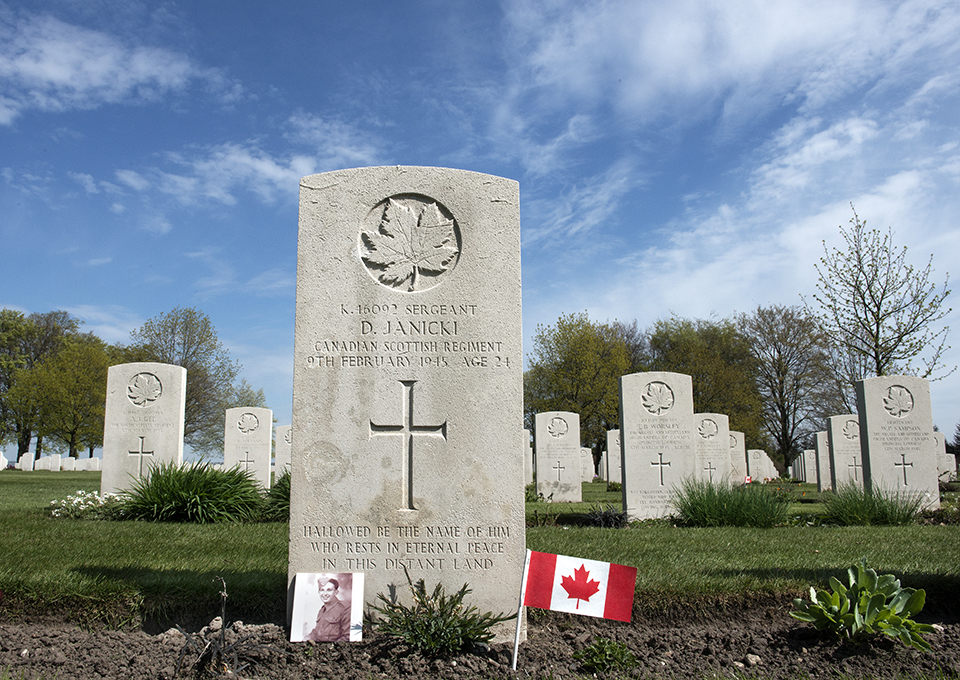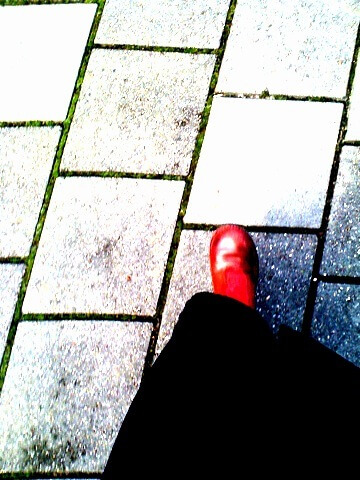I was going to think about the boy when I jumped. He was still just a kid. While his mates continued walking, he stopped for a moment and looked into the lens. Played about with the net imprisoning his helmet. He had a cigarette dangling from the corner of his mouth and an expression that radiated his eagerness to live. Much younger than I am now, his courage was far greater than mine.
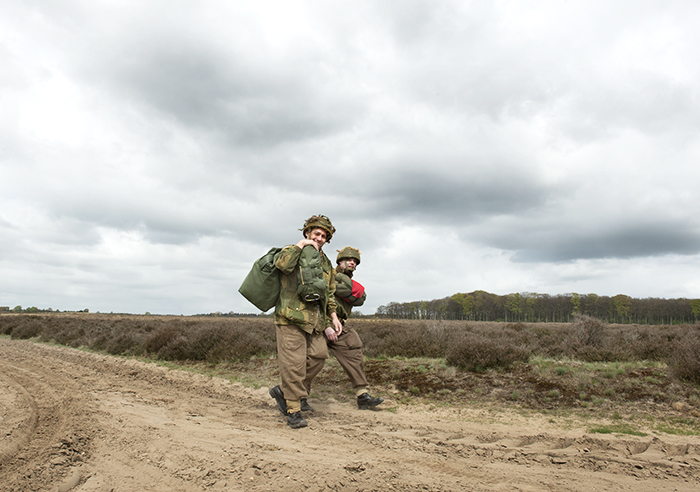
But it can’t have been ‘business as usual’ for these lads who fell out of the sky into an unknown country, in the hope of ending a war before Christmas.
Julia van Vliet saw them coming down, like little balls in the air. While hiding out in the cellar, her father had lifted her up to the little toilet window on 18 September 1944 – she was seven years old. The sun was shining and her otherwise so fearless father had cried and said in a strange voice, ‘Never ever forget this!’. ‘This’ were the 2000 American parachutists who descended in the vicinity of Villa Erica, to this day still a hotel in Berg en Dal.
Liberation Route Europe
She tells her story on the lawn in front of the hotel. Via a listening stone that is part of the Liberation Route Europe, a network of museums, remembrance sites and stories about the liberation years 1944-45. The route is not fixed but meanders like the war itself. By scanning the code on the stone, you are taken back in time to 1944. To the memories of Julia van Vliet.
The Cessna’s roar is deafening. The throbbing propeller can’t be seen by the people trapped in its belly. Suddenly, its nose lifts and it comes away from the asphalt. Beneath me, the River IJssel flows past Zutphen. Past Doesburg with its high Martini tower, blown up in 1945 with the last ammunition the Germans had.
Birds of freedom
When the smoke cleared, it turned out that the Germans had made way for Canadians. It inspired Jan Wolkers to write the text for the liberation monument: ‘When the bell fell still, the birds of freedom appeared.’
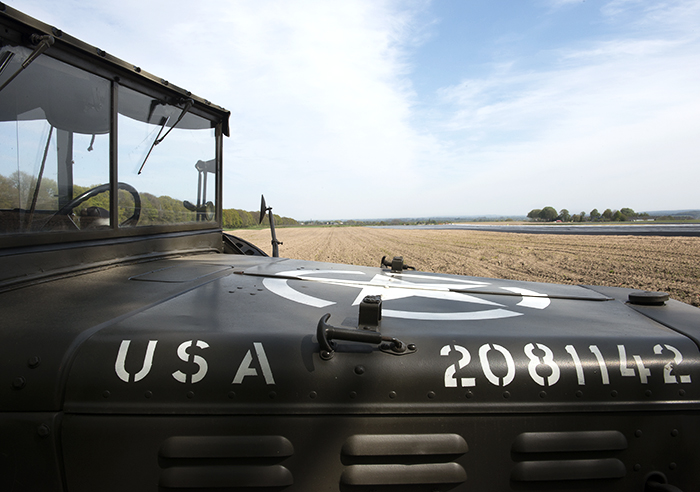
This was where bridgeheads had to be driven across the IJssel, after the liberation of Arnhem, to allow a forward thrust to the Ruhr Area. Arnhem! With its cursed bridge over the Rhine. The small aircraft swings sideways to set course for the Ginkelse Moor near Ede.
That is where the 5200 men from the British 1st Airborne Division landed in 1944. Like the American parachutists at Berg en Dal, they were part of a daring plan conceived by the British Field Marshall Montgomery.
Operation Market Garden
The plan, with the name Operation Market Garden, was a desperate and prestigious landing operation and its objective was to gain control of the bridges across the Waal, the Maas and the Rhine, supported by troops on the ground. Thirty thousand men jumped in broad daylight above Brabant and Gelderland to discharge their task. From there they were to march on the industrial heart of Germany and then advance to Berlin.
But it didn’t work out like that. It went wrong at the bridge near Arnhem and is a story of miscommunication and troops that became cut off. Of miscalculations. Of inflated egos and an enemy that turned out to be more unyielding than expected.
Of a population that lost lives as the result of bombing by the Allied forces. Of 95,000 people that were driven out of their city during the Battle of Arnhem. Of Lieutenant Colonel John Frost who suffered defeat with his men after four days.
Commemoration
The liberation of the northern part of the Netherlands would not take place for another six months. Today, 70 years later, a large part of Western Europe is preparing to commemorate this freedom. Freedom that was sparked off on 6 June 1944 on the beaches of Normandy and spread like wildfire through Europe.
This year, the commemoration will herald the opening of the Liberation Route Europe: a route that connects the Netherlands to the other areas along the advance of the Allies to liberate Europe. From South England via France, through Belgium to Berlin and as far as Gdansk.
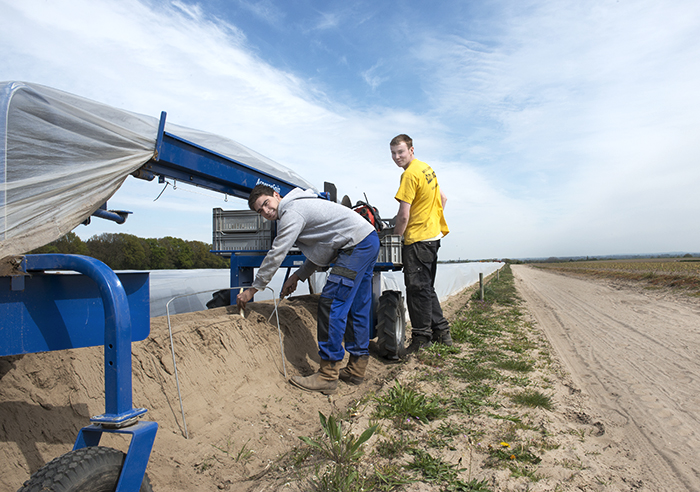
When the boys were jumping out of planes above Gelderland and Brabant in 1944, the screams and resistance of the 83-year old granny were hushed.
Her three-month old grandchild was dead, just like the other members of the family under the stairs of the Erica Hotel.Now only silence echoes and cold comes up from the crawl space as hotel manager Marcel Hoogenboom shows the place where the 18 Jews were concealed.
SS concentration camp
And in the SS concentration camp, Kamp Vught, the 1269 children had long ago been transported to Sobibor, where they were murdered directly after they arrived. Some of them, like Machiel Prins, were only six days old. Others suffocated through the sadism of camp commandant Grünewald who confined 74 women in a single cell as revenge for a silent protest.
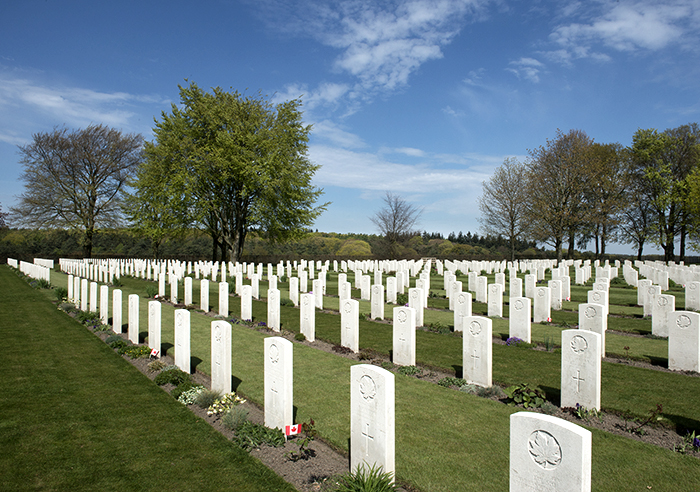
Jan Herberts from Arnhem would have found his Allied contemporaries’ adventures in the air tremendous. Together with some friends, he was part of a small resistance group. During an attack on a German soldier he escaped on the wrong bicycle.
A plate with his name and address on his own bike gave him away. Shortly before the Brits fell out of the sky on 18 September 1944 near the city where he lived, he was executed by firing squad in Vught. It was the day after his 18th birthday.
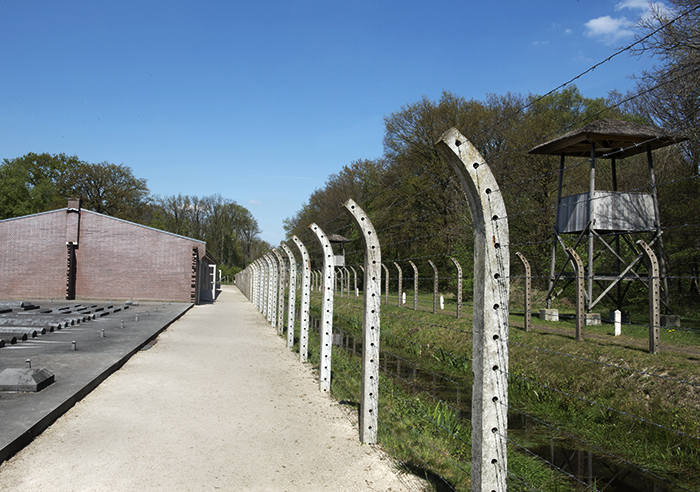
Wedding dress
After the jump, the parachutists gathered their things and headed off. The parachutes they left behind lay as solitary relics on the moor. Good material for a wedding dress. However hard it was, life went on.
War is never clear cut. Julia van Vliet suddenly remembers that after the landing of the parachutists, a German came to use the telephone. At the same moment, Americans appeared in the hotel, and it looked as if the fate of the German was sealed, as Julia’s father also realised. ‘I’d rather you didn’t shoot him dead in my garden’, he apparently said. ‘Take him as a prisoner of war. Give the man a chance.’ After the war, the German came back to the hotel to thank Van Vliet.
Cessna
By now the Cessna has reached a height of three kilometres and it’s shaking. Gusts of wind are trying to disturb the aircraft’s balance. The plastic roll-down shutter, with behind it clouds floating above the green landscape, is flapping. There is a draught of icy wind from under the badly closed shutter.
‘One more minute’, says a man who is called Camembert. He’s going to open the shutter in a moment, so that I can turn 90 degrees and put my legs over the edge. To jump out into nothingness.
Did the boys know about these people? Dutch Jan or the murdered baby Machiel? Did they have any idea who or what they were risking their young lives for? Were they paralysed by fear, like me? Or were they just proud of the task they were carrying out?

And then it all happens very fast. Suddenly my legs are dangling out of the Cessna and the wind is biting my calves. And then I shoot out and whizz through the universe at 200 km/h, through the whiteness of the clouds. The cold embraces me and the wind pulls at me, while the same wind bellows in my ears, as if I were deaf. And then with a tug of the parachute, everything becomes quiet and I descend to liberated Gelderland.
Survived
It’s only after I’m sitting on the moor that I think about the boy again. No idea if he survived the war. Or even the jump. Whether his cigarette was the last he lit before he fell out of the sky here above the moor.
Text: Anneke de Bundel – Images: Nicole Franken
Translation: Christine Gardner
Liberation Route practical
Do visit
- Camp Vught National Memorial
- National Liberation Museum 1944-1945
- Airborne Museum
- National War and Resistance Museum
Activities
Sleep in the area
Eat in the area

